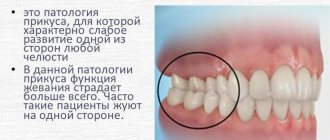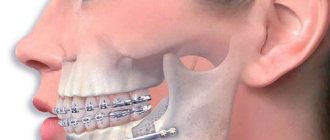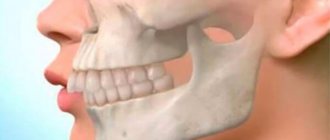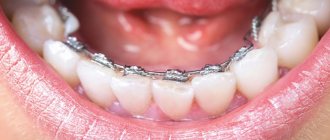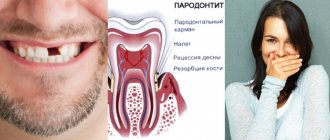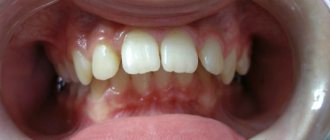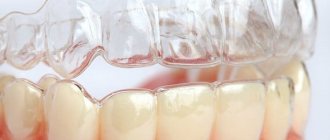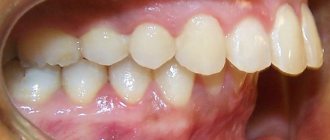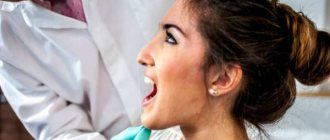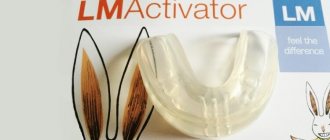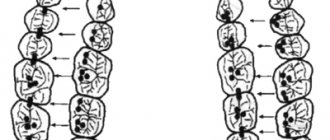Bite in dogs is the relationship between the dentition of the upper and lower jaw. The type of bite in a dog is determined by the nature of the closure of the dentition and can be of four types: scissor-shaped (“scissors”), straight (“pincers”), overshot, undershot.
The bites listed above depend on the length and position of the jaws. In addition, the bite can change for various reasons, and be, for example, floating (a temporary phenomenon in puppies due to a soft, undeveloped jaw), skewed (improper tooth growth, trauma, congenital anomalies) or alveolar (improper inclination of the teeth) .
Chinese crested bite
The normal bite of a Chinese Crested dog is described by the standard as a scissor bite (or, as dog lovers call it, “scissors”). With this type of bite, the upper canines slightly cover the lower ones. In this case, the lower canines should enter the interdental space between the upper extreme incisor and the upper canine, but the surfaces of the teeth should not touch.
CORRECT BITE
DIRECT BITE
A straight bite is a form of bite in which the incisors of the upper and lower jaws are closed with crowns like pincers, which leads to their premature wear.
In simple communication, such a bite is called “pincers” (emphasis on the “e”). In some breeds such an overbite is acceptable, but in Chinese Cresteds it is not desirable. Straight bite in an adult dog
CHILDREN'S UNDERBITE
The bite should be formed by the age of 45-50 days (about 1.5 months) - at the time of activation of the puppy.
Sometimes, however, there are puppies whose lower jaw seems to be slightly pushed back. This is the so-called “children’s underbite” or it is also called “deep bite”. The reason for puppy underbite can be explained very simply - baby teeth are very small and take up relatively little space on the jaw. The gap that remains between the jaws, and which is so similar to an underbite, is free space for larger molars. As you grow, after changing teeth, this deficiency is corrected without any intervention.
Children's underbite, which will improve with age
UNDERBITE
Underbite is a pronounced gap between the incisors of the upper and lower jaw.
Underbite is an unacceptable form of bite for the Chinese Crested. Such dogs should be excluded from breeding activities and sold without the right to participate in exhibitions and breeding. A very severe underbite can cause the fangs of the lower jaw to injure the gums of the upper jaw. In this case, it is recommended to remove the lower canines and the dog can lead a normal life. Underbite no longer affects the dog's health in any way. Since we are talking about underbite, dogs also have another form of overbite - compensated underbite. Compensated underbite is characterized by some shortening of the lower jaw in combination with an alveolar inclination of the incisors and canines. Thus, the lower jaw is significantly shorter than the upper jaw, but the incisors and canines on the lower jaw are located at such an angle that they come into contact with the upper teeth and form a tight scissor bite.
SNACK
An underbite is a form of bite in which the incisors of the lower jaw are located in front of the incisors of the upper jaw (the so-called “bulldog” or “bulldog jaw”).
Overbiting is an unacceptable form of overbite for a Chinese Crested. Such dogs should be excluded from breeding activities and sold without the right to participate in exhibitions and breeding. A very pronounced undershot can be noticeable when looking at the dog’s face - the lower jaw protrudes, the tongue or fang sticks out. In this case, you can remove the protruding teeth, or contact a veterinary dentist. Very often, a puppy’s malocclusion can form when the owner allows the change of baby teeth to molars to happen. Due to impaired tooth growth, the puppy’s teeth change process incorrectly and an incorrect bite is formed. For example, a primary canine does not allow the molar to grow properly, which causes the molar to move the incisors. Read the article -
One of the most common oral pathologies in dogs is malocclusion. Dental diseases in dogs often cause chronic damage to the intestines, stomach, joints, skin, respiratory system, kidneys and even the heart. Since the state of the digestive system affects the overall well-being of the animal.
Malocclusion in dogs makes it difficult to eat and injures the mucous membrane of the cheeks, gums, tongue and lips. It can also cause sinusitis. Dogs with malocclusions cannot participate in exhibitions even after successful correction; they cannot participate in breeding work, since jaw pathologies are often genetic in nature.
Causes of malocclusion in dogs
Among the most common causes are genetic and hereditary abnormalities. Incorrect formation of teeth is also affected by:
- developmental disorder,
- lack of minerals in the diet,
- training and games with excessive stress on growing teeth,
- untimely change of teeth,
- injuries,
- too large molars and any other discrepancy between the size of the teeth compared to the size of the jaws.
You can notice the incorrect position of the teeth after the puppy is four months old when the baby teeth are replaced with permanent ones. At this point, some animals experience oligodontia (not a full set of teeth) or the presence of extra teeth (hyperdontia, polyodontia). In small dog breeds, double rows of teeth are often observed due to non-loss of baby teeth (false polyodontia).
Prevention of malocclusion
At the initial stage, the baby’s nutrition should be adjusted. The puppy must receive the required amount of nutrients and vitamins. This is especially true for bone-forming elements - calcium, vitamin D.
You should be very careful when playing tug of war with puppies before teeth change.
When playing with a young animal, it is necessary to correctly calculate the strength. The dog should be allowed to pull the toy on its own. In this case, the animal’s strength will develop without compromising the bite.
It is worth keeping an eye on what and how your baby chews. This way the owner will protect the animal and his home from problems. Pet stores offer a wide range of rubber toys for dogs. They are designed for different loads, so they are suitable for dogs of different breeds.
The dog should not be hit in any way. Any corporal punishment leads to injuries not only psychological, but also physiological.
For many dog breeds, bite is important. The owner decides what to do with the problem. Incorrect jaw position can lead to serious health problems and professional unsuitability. A problem detected in time and correct treatment corrects the situation.
Types of malocclusions
The three most common types of malocclusions are:
- Prognathia,
- progeny,
- crossbite
Prognathia, that is, undershot
It is not considered normal in one breed. This is insufficient development of the lower jaw, when the lower incisors do not reach the upper ones. The upper premolars are displaced forward in relation to the lower premolars.
Progenia (underbite, reverse scissor bite, or bulldog bite)
occurs when the lower incisors protrude in front of the upper incisors. This bite is considered normal in some breeds with a short muzzle: French and English bulldogs, boxers,. A direct bite is also abnormal, when the lower and upper incisors touch each other with their edges.
However, this contact can cause uneven wear and early tooth loss. But for some breeds it is considered normal. also such anomalies as anterior crossbite
(one or more lower incisors are located in front of the upper incisors), crooked bite (one side of the jaw grows faster than the other), open bite (some incisors do not touch each other and are spaced vertically). There are also unerupted teeth.
Correcting malocclusion in dogs
Orthodontics deals with the prevention and correction of malocclusions. Doctors insist that the sooner a dog’s bite is corrected, the faster and easier it is to achieve good results. Correction occurs with the help of braces - special structures for correcting the bite and straightening the teeth. They are removable and non-removable.
The most modern removable systems are acrylic transparent aligners that press on the teeth in the desired direction. They are changed every one to two weeks so that the teeth constantly shift. Removable modified braces for small puppies in the form of a rubber ring are also often used. Fixed structures are fixed until the bite is corrected. The doctor periodically tightens the plates to adjust the degree of rotation and inclination of the tooth being corrected.
Malocclusion in dogs
- one of the most common pathologies of the dental system in Yorkshire terriers, Chihuahuas, Biewers, Pomeranians and other breeds. Malocclusion in dogs creates inconvenience when chewing food, but the dog quickly gets used to it. Sometimes, with an incorrect bite, teeth can stick out crookedly and injure the gums and mucous membrane of the cheeks. Dogs with malocclusion do not meet show criteria, but they can be outstanding representatives of the breed and a loyal friend.
Dog teeth and bite
Scissor bite Strong, well-developed teeth are the most important indicator of a dog’s health, and it is no coincidence that this sign is given serious importance in exterior assessment. It has been noticed that meager, inadequate feeding and poor living conditions, as well as the lack of proper selection work with the breed and the incorrect use of close related breeding cause a weakening of the constitution in dogs and the appearance of signs of degeneration . Most often they manifest themselves in the form of ugly jaws, malocclusions, small and sparse teeth, etc. To avoid the consolidation of these defects, dogs possessing them are rejected during the selection of sires. Hunter-dog breeders need to be well aware of the form of the correct bite and all the characteristic deviations from the norm.
Dog bites
Dogs have 42 teeth: 12 incisors, 4 canines, 16 false molars and 10 molars. Teeth perform different functions and are different in structure. Incisors are the front teeth used for biting food. There are six of them in each jaw. The pair of incisors located in the center, in front, are called “hooks”. Those located to the right and left of them are “middle”. Those located at the edges are “extreme” or “edges”. fangs , and on the upper jaw they are larger and more massive than those in the lower jaw. In each side of the upper jaw there are 6 molars: in each side of the lower jaw - 7. The four molars, located behind the canines on each side of both jaws, have predecessors - milk teeth and are called false molars, the teeth behind them are permanent and are called truly indigenous. Teeth should be white and healthy. Yellow, blackened, so-called “carious” teeth are most often a consequence of suffering from the plague. Usually, those teeth that have not yet erupted in the puppy during the period of illness and are located in the gums are subject to damage. The closing of the teeth of both jaws is called a “bite.” A normal, “scissor” bite should be as follows: With the jaws closed, the lower incisors adjoin their front side to the back side of the upper incisors . The edges of the upper jaw extend between the edges and canines of the lower jaw. The mandibular canines fit into the spaces between the canines and the margins of the upper jaw, forming a so-called “lock” that provides a strong grip. False-root teeth with their sharp ends fit into the spaces between the teeth of the same name in the opposite jaw. Modern show rules state that any deviation from normal occlusion is a defect.
Underbite
Typically in dog breeding practice the following deviations from the normal (scissor) bite are encountered. Direct or pincer bite, when, when the jaws are closed, the maxillary and mandibular incisors rest their points against each other. In this case, the cutting surfaces of the cutters are ground down very quickly.
“Underbite” or “underbite” is a form of bite in which, due to an overly elongated upper jaw or shortened lower jaw, its incisors do not fit closely to the upper incisors and a space is formed between them. In this form of bite, the canines of the upper jaw are tightly pressed to the lower ones and grind down their back surface. With a pronounced underbite, the false-rooted teeth stand with their edges against each other, grinding down and breaking.
Snack
“Overbite” is a closure of the teeth when the incisors of the lower jaw move forward. This form of bite can be formed due to incorrect inclination of the lower incisors (too oblique position), in which case the overbite is small, the thickness of a tooth or a little more. A large undershot occurs when the upper jaw is shortened or tilted upward. In certain breeds of dogs (non-hunting) - bulldogs, boxers, pugs and others - the upper jaw and facial bones are very shortened , the muzzle is sharply upturned and then not only the incisors, but also the canines of the lower jaw are in front of the upper incisors and sometimes even uncovered by the missing upper incisors lip. This type of snacking is called a “bulldog bite” or “bulldog bite”. Malocclusions are sometimes noticeable in puppies between 1 and 2 months of age. After changing the incisors (4-5 months), the shape of the bite changes relatively rarely. However, even at this age, the bite may still change. Underbite that occurs in puppies can sometimes be corrected by improved rearing and feeding conditions. Underbite is more difficult to correct; observations show that it is corrected in long-headed dogs, whose heads, which are relatively large in comparison to their height, take a very long time to grow. Thus, in fox terriers a pronounced underbite was noticed, which disappeared completely after about 5 months. In dogs with normal head proportions (hounds, pointers, spaniels), the underbite established after changing teeth, as a rule, does not disappear.
Proper dental examination
There are many examples where, with age, the bite changes depending on the wear of the teeth. Often, with age and associated wear of the incisors, a scissor bite becomes pincer-shaped after 4-5 years. In dogs 7-8 years old, when the incisors of both jaws are deeply worn away, the remaining concave crowns also form a pincer-like bite, and sometimes it cannot be determined at all. Dogs with these age-related changes should not be taken to shows or litters. To examine the bite, the owner sits the dog down and covers its muzzle with his left hand, holding the jaws closed. At this time, with your right hand, you should push the upper and lower lips in front, exposing your teeth. Experts should not do all this themselves to avoid biting and spreading infection from dog to dog. Before showing the teeth, the dog must be calmed by stroking and voice, trying to do all movements calmly so as not to frighten or excite it. The jaws are held lightly. Strong squeezing causes a defensive reaction in the dog. If a dog's teeth are not examined, the dog's score may be reduced, equating it to a dog with malocclusion. Therefore, young dogs need to be trained in advance to show their teeth.
A. Mazover, expert of the all-Union category, “Hunting and game management” No. 7 - 1961.
Types of malocclusion in dogs
For various reasons, Yorkies, Biewers, Chihuahuas, and Pomeranians may develop malocclusions; there are several types of them:
- overshot jaw
- a situation that in science is called progeny - when the lower incisors protrude in front of the upper ones, but there are breeds in which an overshot jaw or progeny is considered one of the criteria for meeting the breed standard (bulldog, shih tzu, boxer);
In the photo there is an overshot jaw in dogs:
The photo shows a bulldog bite. In Yorkshire terriers, Biewers, Chihuahuas, Pomeranians and other breeds, this position of the teeth is considered an underbite:
- undershot jaw
- or in other words, prognathia (a term in veterinary dentistry) is a situation in which the lower jaw in dogs is not sufficiently developed, the jaws do not close, because the incisors of the lower jaw do not reach the incisors of the upper jaw;
In the photo there is an underbite of the jaw in dogs:
- direct jaw bite is one of the variants of progeny; the upper and lower jaws close, but not in a scissor-like position. A straight bite in dogs is considered normal in most breeds.
The photo shows a direct bite in dogs:
Correct bite in dogs (photo):
Pincer bite
This jaw position is considered unacceptable for most dog breeds. However, a pincer bite is still considered a not too serious defect. In this case, the dog’s lower and upper incisors are located on the same line and rest against each other. Because of this, they wear down very quickly. A direct bite in dogs usually does not have a negative effect on canines and molars.
Pincer-like closure of the incisors in dogs can be either congenital or acquired. Such a defect can develop, for example, due to the puppy playing tug too actively. Excessive loads of this kind, of course, are unlikely to have a negative impact on the jaw. However, a puppy's lower incisors may begin to move forward when pulled.
Causes of malocclusion in dogs
- genetic abnormalities in dogs;
hereditary abnormalities in the body of dogs (if one of the parents had an incorrect bite);
training puppies, active games with improper load on the jaws at the time of teeth growth;
various types of jaw injuries (bruises, fractures, displacements, cracks, distortion);
If at the moment of changing milk teeth to molars, a situation arises that the temporary teeth have not yet fallen out, but permanent teeth have grown nearby. In this case, the jaw expands, the gums swell, which can most likely lead to deformation and, consequently, to an incorrect bite;
Representatives of the Yorkshire Terrier, Chihuahua, and Pomeranian breeds have the concept of “baby face” - a shortened type of face, but baby face also entails small jaws. A puppy is born with a correct bite, but after the baby teeth are replaced, the molars can grow wider and consequently deform the jaw, causing changes in the bite of the teeth - either overshot or undershot;
Another important reason for malocclusion in representatives of decorative breeds (Pomeranian Spitz, Yorkshire Terrier, Biewer, Chihuahua) is a lack of minerals in your pet’s diet, but the situation can be corrected by taking a vitamin and mineral course. I presented several mineral options with an accessible description of the preparations, method of application and effects on the body of a puppy or an adult in my article
What are the consequences of malocclusion
In addition to poor heredity, the consequences for the animal's health can be disastrous. The main and main disadvantage is that the pet’s chewing function is disrupted. As a result, the digestive system suffers. Excess weight and shortness of breath appear. Service dogs lose speed, endurance, and decorative dogs lose their appearance.
Another point is the animal’s poor grasping ability. For some breeds, this is a significant drawback that puts the animal out of action. This is important for service breeds - shepherd dogs, guard dogs, bloodhounds.
As a result of jaw and head injuries, dogs lose their sense of smell completely or their ability to distinguish odors is significantly reduced. This is important for bloodhounds and service dogs.
An incorrect bite can lead to the development of gastrointestinal diseases.
Correcting malocclusion in Yorkshire Terrier, Pomeranian, Chihuahua, Biewer
Puppies of all breeds are born without teeth, milk teeth, i.e. temporary ones begin to erupt at the age of three to four weeks and fully grow by the age of 4 months, since the sequence of erupted teeth is gradual:
The puppy is 4-5 weeks old – fangs are erupting (2 upper, 2 lower);
The puppy is 4-6 weeks old - the incisors are erupting (6 upper, 6 lower ideally, since the number of incisors can be fewer, either 4 or 5);
Yorkie, Pomeranian, Chihuahua, Biewer puppy is 5-6 weeks old - premolars are erupting. A set of baby teeth consists of 28 pieces, but from the age of 4 months they gradually begin to fall out, being replaced by a set of permanent teeth, and their number is already 42. Molars are not only more in number, but they are also larger in size. During the period of teeth change, which lasts up to 8 months of age, sometimes oligodontia occurs - incomplete teeth or, on the contrary, polyodontia - the growth of extra teeth.
During the period of teeth change, malocclusions occur in dogs; this process is influenced to some extent by your pet’s diet - the food does not contain the required amount of minerals and vitamins and does not contribute to the development of chewing muscles.
In the early stages of malocclusion development in Pomeranian, Chihuahua, Biewer, and Yorkshire Terrier puppies, the situation can be corrected.
Orthodontics is a branch of veterinary dentistry that deals with the correction of malocclusions in dogs, and can also prevent the development of such anomalies in time.
Currently, there are a very large number of devices for correcting bites in dogs, but a more effective result can be quickly achieved in puppyhood, before the jaw bones become hardened. One of the very effective inventions in veterinary dentistry for correcting malocclusions is considered to be braces.
Braces for dogs are made of transparent and elastic rubber material. Braces correct the bite within a few weeks (5 - 6 weeks), without creating discomfort in the oral cavity.
Larry Baker is a veterinary dentist who invented braces for dogs made from an elastic material. The brace system is not a cheap pleasure; the price for individual production of braces, on average, is $1000. Braces - systems are not installed on dogs in every veterinary clinic and not in every country in the world.
The photo shows elastic braces for dogs:
Not all malocclusions can be corrected by braces, but before starting such treatment, it is necessary to establish the correct diagnosis - the reason for the development of malocclusion in the dog.
Many veterinary clinics install metal braces, which consist of metal wire and brackets (clasps) that are attached to the teeth with glue.
The braces are made removable and worn continuously (for the entire duration of treatment), depending on the type of malocclusion. In removable braces, it is possible to adjust the distance between the brackets and change the pressure exerted by the brackets on the teeth.
Removable braces are a rubber ring and are very effective for Yorkie, Chihuahua, Biewer and Chihuahua puppies.
To make braces, it is necessary to make an impression of the jaw under general anesthesia. The advantage of removable and rubber braces is that anesthesia is not needed when installing them. Removable braces can be removed while eating.
The dog was a wild animal that was forced to get its own food, until its domestication. Modern representatives of canines, although they have many varieties and breeds, still remain the same carnivores, with strong teeth and a correct bite. In the process of evolution, the bite of dogs of most breeds has remained scissor-shaped, and only in artificially bred breeds is an underbite considered the norm.
Full teeth and normal occlusion in dogs means an anatomically correct structure of the jaws and the location of the teeth. When the dog's teeth are closed, they form a strong lock, which is necessary to hold the prey.
.
The scissor bite in canines is a distinctive feature of almost all dog breeds, and the correct alignment of the teeth is strictly assessed upon admission to breeding. Animals with dental irregularities or defects in the structure of the jaws at exhibitions are disqualified and are not allowed for breeding. .
This strict position of most cynological organizations is due to the fact that bite defects are passed on to descendants
. This means that the number of dogs with disorders causing various pathologies will increase. After all, correct bite is extremely important; deviations from the standard lead to the following consequences:
- Inability to close the jaws, which leads to constant drooling and impaired chewing functions;
- Injury to the soft tissues of the palate by sharp edges of the teeth;
- The formation of fistulas due to the gradual ingrowth of an incorrectly growing fang;
- The appearance of weeping eczema and dermatitis due to the constant flow of saliva;
- Various pathologies in the digestive system, gastritis and stomach ulcers;
- Excessively close contact of the fangs, which occurs with underbite. This is dangerous due to rapid wear of all teeth. By the way, previously it was practiced in case of underbite, which saved the animal from suffering.
There are some deviations from the scissor bite that are caused by improper rearing of the puppy. Thus, a direct bite is considered a normal variant, but with it the incisors rest against the incisors, which leads to premature grinding of these teeth. Molars and canines are not ground down in this disorder.
.
Bite correction
To avoid the negative consequences of a malocclusion, you can try to correct it. To achieve this, veterinary clinics offer early correction of bites in puppies using a rubber tight ring, as well as the installation of braces for adult dogs.
Your puppy's teeth may become crooked due to playing tug
during or as a result of late loss of fangs. In this case, the incisors lean forward too much, and the fang can grow directly into the gum. For up to six months, you can try to correct an incorrectly tilted tooth even at home.
The owner will need patience, and the puppy will have to endure annoying manipulations in his mouth for several evenings. To align a fang or incisor, you need to create pressure on it, which can be done by simply pressing your hand. At the same time, hold the teeth with a piece of bandage so that the hand does not slip, and press quite firmly on the tooth, directing it in the desired direction.
If home methods do not bring results, then the dog gets braces at the clinic
.
The procedure is carried out under general anesthesia, after which the animal feels somewhat unusual for several days. After a week, the dog gets so used to the braces that it doesn’t feel any discomfort. .
The braces system acts mechanically on the teeth, causing them to gradually deviate in the desired direction. In this case, the vacated space is gradually, millimeter by millimeter, filled with bone tissue, preventing the tooth from returning to its previous position.
Causes of malocclusions
Most dog breeders want to bring their pets' bite back to normal in order to return the animal to the breed and be able to get breeding offspring. This issue should be given special attention, because the fullness of the dog’s life and its health will depend on it. It is better to do this within a period of 5 months to a year.
DETAILS: Correction of bite with braces in Moscow, how much do braces cost in Moscow
The most common cause of deviations in bite occurs from the genotype of the animal and heredity. But many of the root causes of acquired malocclusion lie in the carelessness of the owners or oversight. Examples:
- The change of teeth was not done on time. Sometimes baby teeth stay in place and prevent the permanent ones from growing properly. The owner needs to monitor the dog during this period and promptly contact a specialist for tooth extraction;
- Bad Education. Unsupervised puppies may chew on everything and develop an early malocclusion. During the appearance of teeth, it is difficult to prevent a small pet from gnawing on something, because it experiences unpleasant sensations. In this case, you should purchase a special teething toy, as well as dog treats, and raise the puppy correctly;
- Injuries. Not a single animal is immune from them, but nevertheless you should monitor its games and behavior. Careless owners sometimes resort to the method of poking the puppy’s nose into a puddle. As a result, they can injure still fragile jaws and teeth;
- Wrong games. The period of teeth growth imposes a certain responsibility on animal owners. There is no need to allow puppies to engage in tug-of-war with sticks or hang with their teeth clinging to a rubber tire from a wheel;
- Lack of vitamins and nutrients (rickets). An improper diet will cause your teeth to become thin and weak, and your gums to become loose. And as a result, all this will lead to malocclusion. The problem can be solved by proper nutrition and a sufficient amount of all the substances necessary for the puppy in the food. But due to the inexperience of the owners, rickets may simply be unnoticed and ignored;
- Abnormal shape of the frenulum. Leads to a change in the plasticity of the lips, which, in turn, begin to put too much pressure on the growing teeth. If you contact a specialist in a timely manner, the problem can be easily and quickly solved by trimming the frenulum.
- Incorrect number of teeth. If there are few teeth, then a veterinarian orthodontist will help solve the problem. If the number of teeth exceeds the required number, they are removed in time and the jaw is restored to normal.
DETAILS: Correcting deep bites with traction
Owner actions
A responsible owner must understand that a corrected bite in a pet does not mean that no matter how good its exterior is, this representative can participate in breeding. A female or male will definitely pass this defect on to her offspring.
After getting braces, your dog needs to be treated daily so that food does not accumulate under the steel mechanism, irritating the gums. The mandatory cleaning ritual takes little time, the animal quickly gets used to it and the teeth remain healthy.
.
a special collar on him.
. The collar is not removed until the dog stops paying attention to the braces.
Video. Showing Teeth - Puppy Training
One of the most important indicators of a puppy’s quality as a future breeder is its bite. The topic is important both for show pets and for pets, because an incorrect bite in a puppy can develop into gum disease, disruption of the digestive system and, as a result, heart failure.
The concept of “correct bite” is individual for each individual breed; what is good for a Bulldog is a disqualifying defect for a German Shepherd. In a global sense, cynology distinguishes the following types of bites:
- Orthognathia, scissor or normal
- the front of the lower incisors touches the back of the upper incisors, see photo below. There is no gap between the incisors, however, the teeth do not rub against each other. The bite is called normal due to its naturalness and prevalence. All wild canids have a scissor bite, which allows them to effectively gnaw meat and bones, bite and hold prey. Almost all service dogs have a normal bite, for example, Labrador, German and other shepherds, hunting dogs, hounds.
- Pincer-shaped or straight
- when the jaw is closed, the front incisors come together end-to-end, the canines and chewing teeth close completely or not completely. Direct bite affects the health of the incisors, which wear out much faster. Incomplete closure of the chewing teeth leads to problems with chewing food, and as a result, indigestion. A very common deviation for small breeds, for example, Chihuahua, Yorkie, Spitz.
- Progenia, overshot, protruding chin or bulldog bite
- the lower jaw, respectively, the incisors and/or canines protrude in front of the upper ones. Undershot is a breed trait for a number of dogs with a short muzzle, such as the Boxer.
- Prognathia or undershot
is a disqualifying fault for all known dog breeds. The lower incisors do not touch the upper ones due to the shortened lower jaw.
- An asymmetrical or skewed bite
, like an underbite, is guaranteed to disqualify a dog from breeding. Additionally, an asymmetrical bite can have serious consequences on both your dog's appearance and health.
Underbite
This defect is considered more serious than a pincer bite. Underbite causes disqualification at shows of most dog breeds. The lower jaw in animals in this case is underdeveloped. Because of this, the dog has free space between the incisors. The lower canines are loosely adjacent to the edges of the upper jaw.
This type of defect can lead to the development of serious dental diseases in pets. The most affected dogs with this type of bite are the canines and molars. In this case, they are adjacent to each other too tightly. Also, dogs with this problem often develop tartar.
